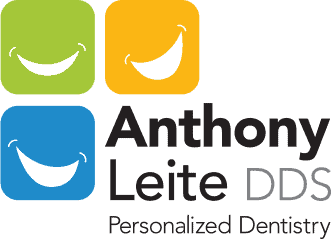Same Day CEREC Crowns in Mill Valley, CA

CEREC is CEramic REconstruction or Chairside Economical Restoration of Esthetic Ceramics. It’s a sophisticated system tasked with the designing and making of high quality, metal-free dental restorations in just one patient visit. With the help of CAD/CAM technology and 3D photography, the dentist can design a virtual reconstruction be it inlay, crown or bridge. What’s even more fascinating is the fact that he or she doesn’t have to take impressions, and if he or she combines the milling unit, he or she will have the capability of building the actual restoration while you’re still in your chair.
We still keep seeing more developments as recently another upgrade got introduced in the market. It’s the CEREC AC. This device enables you to have digital impressions for restorations. In other words, the boundaries of what you can do with it are limitless. Previously, a traditional appointment would go on for ages, and it forced patients to book a follow-up session with the dentist. But now, you’re able to go in and out in less than 2 hours. Something else worth noting is, the restorations always look excellent, and they are flawlessly fit. The materials that constitute the make-up are metal free and biocompatible!
The history of the invention
Founded in Bensheim, Germany, Sirona Dental Systems are the architects behind this remarkable innovation. It was in 1980 when the first CEREC method was developed at Zurich University by M. Brandestini and W. Mormann. In 1985, the first patient got to enjoy its services even though the material used back then was VITABLOCS Mark I. The year after, Siemens applied for a license to permit the firm to market and continue developing the equipment. Consequently, a year after the acquisition, it came up with an upgraded version called the CEREC I with new features such as single and dual-surface inlays. The material used was now VITABLOCS Mark II. Not much took place from there on until in 1990 when the International CEREC Symposium got held at the University of Zurich. All this while the machine worked with the help of a hydraulic drive, but in 1991 the electronically controlled motor got introduced as the replacement. Scientists consistently worked on ways to improve the device, so it came as no surprise when in 1994 the CEREC II got revealed. It came with essential features like veneers, inlays, and on-lays. A lot changed since the introduction of the first CEREC so in 1996 there was a CAD/CAM Symposium to recognize the decade spent on the equipment.
In 1997, Sirona got created after the Dental Division of Siemens AG sale. The same year came with the formation of the CROWN 1.0 program meant to produce full-ceramic posterior crowns. However, in the following year, a partnership was formed between firms that were to manufacture a second material needed in the procedure; the Ivoclar, and ProCAD.
Fast-forward to the year 1998 when the CROWN 1.11 program got unveiled, and its primary purpose was to produce anterior and posterior restorations. Two years later, the company developed the CEREC 3 which had a compact Windows-based CAD/CAM system. It compelled the firm to go into partnership with a third organization that would help them manufacture the third material needed for the process. This content was the 3M Paradigm MZ100.
By 2002 there were over 2500 CEREC users in the United States and over 5 million restorations placed worldwide. Another 3D software version got released in 2003, and it enabled users to experience the 3D views of teeth and models. Since then CEREC has celebrated more than three decades in the medical profession, and during its twentieth anniversary, Sirona released a BIOGENERIC software version. With this new software, the machine is now able to rebuild the missing tooth shape together with its surface. The MCXL milling unit got released in 2008, and the following year the CEREC Acquisition Center also got unveiled. The AC receives power from Bluecam.
How the procedure gets performed
The CEREC crown process is faster in comparison to your typical dental crown session. Once you visit your doctor, the first thing he or she confirms is whether or not you require the crown. From there, the doctor prepares the tooth, and an intraoral camera helps to capture the digital image or impression of the tooth. Depending on the image, the CEREC software will then develop a virtual model of your tooth. It’s this model that your dentist will use to construct your tooth restoration on the screen before forwarding the completed construction wirelessly to a milling machine that’s in the office. At the device, a high-grade ceramic with plaque-resistant material gets manufactured to finish your new crown by the CEREC equipment. All these activities in the process take place while you are still conscious. The doctor will then add a couple of finishing touches to the restoration and place the crown on the tooth. After a little adjustment, your CEREC crown will be sized correctly, and thus your smile will improve.
Benefits of the procedure
- Saves Time – In the past, people had to wait for weeks or even months for the permanent crown. The patient had to go for restoration fitting before the specifications got sent to the lab for the creation process to commence. Today, you go in for an appointment and leave with a restored tooth.
- Exceptional Fit – Since the restoration gets created in the office, any necessary alternations can happen during the appointment.
